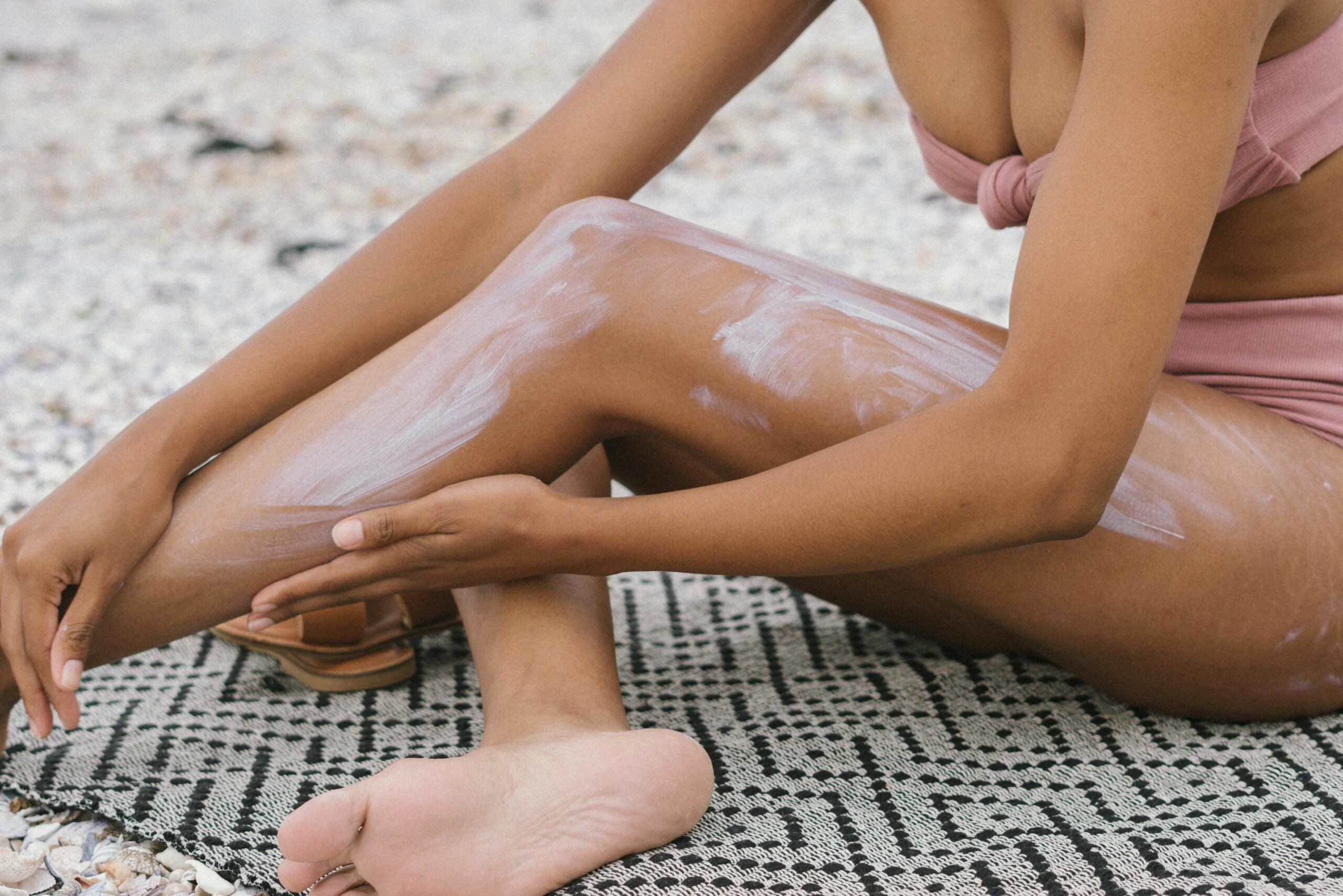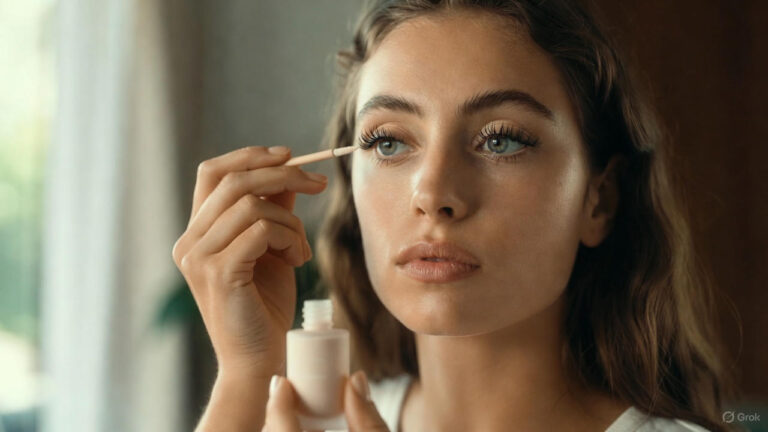Melasma is a common skin condition that causes dark, discolored patches on the skin, usually on the face. While it’s not harmful, melasma can affect one’s confidence and be frustrating to manage.
One of the primary causes of melasma is exposure to the sun’s ultraviolet (UV) rays. This makes sun protection a crucial part of preventing and managing the condition.
In this article, we’ll dive into the importance of sun protection for preventing melasma and how you can shield your skin from UV damage.
What is Melasma?
Melasma appears as brown or gray-brown patches on the skin, most often on the cheeks, forehead, nose, or chin. It occurs when the skin’s pigment-producing cells (melanocytes) produce too much pigment (melanin), leading to discoloration. While the exact cause of melasma is unknown, several factors can trigger it, including hormonal changes, pregnancy, and, most notably, sun exposure.
Sun exposure is a significant contributor because UV light stimulates melanocytes to produce more melanin. The more time you spend in the sun without protection, the higher your risk of developing or worsening melasma.
How Sun Exposure Affects Melasma
When your skin is exposed to sunlight, specifically UVA and UVB rays, it triggers the melanocytes to ramp up melanin production. This leads to the formation or worsening of dark patches. UVA rays penetrate deeply into the skin, causing long-term damage and playing a major role in hyperpigmentation conditions like melasma.
Even small amounts of sun exposure, like walking outside briefly or sitting near a window, can activate melasma. That’s why consistent sun protection is essential for both preventing the onset of melasma and preventing it from worsening if you already have it.
Why Sun Protection is Crucial for Preventing Melasma
1. Prevents the Overproduction of Melanin
Sun protection acts as a shield, blocking the harmful UV rays from reaching the skin’s deeper layers. This helps prevent the overproduction of melanin, which is the root cause of melasma. Regular use of broad-spectrum sunscreen, which protects against both UVA and UVB rays, can significantly reduce your chances of developing melasma or worsening existing patches.
2. Reduces the Risk of Skin Damage
Frequent sun exposure doesn’t just affect melasma; it can lead to broader skin damage. Prolonged exposure to UV rays accelerates skin aging, causing wrinkles, fine lines, and sunspots. Protecting your skin from the sun reduces your risk of melasma and keeps your skin looking healthier and younger over time.
3. Helps Control Hormonal Triggers
Hormonal fluctuations, such as those during pregnancy or from taking birth control pills, can increase the risk of melasma. While you can’t always control hormone changes, you can control your exposure to the sun. Using sun protection regularly during hormonal shifts can minimize your chances of triggering melasma.
4. Maintains Even Skin Tone
Melasma tends to appear more prominently in people with darker skin tones due to higher levels of melanin. Sun protection is key to maintaining an even skin tone and preventing further pigmentation. Wearing sunscreen daily, regardless of skin tone, can help keep your complexion smooth and prevent discoloration from becoming worse.
5. Protects Against All Forms of UV Exposure
It’s easy to think sun exposure only happens when you’re outdoors. But UV rays can also penetrate through windows, meaning you can still be exposed to harmful rays indoors or while driving. Daily use of sun protection ensures you’re shielded from all types of UV exposure, whether you’re inside or out.
Types of Sun Protection for Melasma Prevention
To effectively protect your skin from UV damage and prevent melasma, it’s essential to use a combination of sun protection methods. Here are some key strategies:
Sunscreen
A broad-spectrum sunscreen with at least SPF 30 should be part of your daily skincare routine. Look for sunscreens that offer protection against both UVA and UVB rays. Physical sunscreens, containing zinc oxide or titanium dioxide, may be preferable for melasma sufferers as they sit on the skin’s surface and reflect UV light. Remember to reapply every two hours, especially if you’re sweating or swimming.
Hats and Protective Clothing
Wearing wide-brimmed hats, long sleeves, and sunglasses can help protect your skin from direct sun exposure. Clothing with a high ultraviolet protection factor (UPF) rating offers extra defense against harmful rays.
Seeking Shade
Whenever possible, stay in the shade, especially between 10 AM and 4 PM, when the sun’s rays are strongest. This simple habit can significantly reduce your exposure to harmful UV rays.
Tinted Sunscreens
Tinted sunscreens contain iron oxides, which offer an extra layer of protection against visible light, another contributor to melasma. This type of sunscreen is especially beneficial for people prone to hyperpigmentation and those with darker skin tones.
UV-Protective Window Films
Installing UV-protective films on car or home windows can block harmful UV rays from penetrating indoors. This is an effective way to reduce exposure even when you’re not outside.
The Role of Skincare in Preventing Melasma
In addition to sun protection, certain skincare ingredients can help prevent and manage melasma. Products containing ingredients like vitamin C, niacinamide, or tranexamic acid can help brighten the skin, reduce pigmentation, and enhance the skin’s barrier function. Always consult a dermatologist to create a skincare routine tailored to your specific needs.
Vitamin C
Vitamin C is a potent antioxidant that helps neutralize free radicals and brighten the skin. It can also reduce melanin production, making it an excellent complement to your sunscreen in preventing melasma.
Niacinamide
Niacinamide (vitamin B3) helps reduce inflammation and prevents the transfer of melanin to the skin’s surface. This ingredient is ideal for those with melasma, as it not only lightens dark spots but also strengthens the skin’s barrier.
Tranexamic Acid
Tranexamic acid works by inhibiting melanin synthesis and has been shown to be effective in reducing melasma. Using this ingredient into your skincare routine, under the guidance of a dermatologist, can help fade dark patches over time.
Conclusion
Sun protection is vital for preventing melasma and managing existing cases. By consistently using sunscreen, wearing protective clothing, and adopting sun-smart habits, you can greatly reduce your risk of developing melasma or making it worse. Pairing sun protection with melasma-targeted skincare can help you maintain a more even complexion and protect your skin from long-term damage. Take the necessary steps today to shield your skin and enjoy a healthier, more radiant look.
FAQs
1. Can I treat melasma without sun protection?
Treating melasma without sun protection is ineffective. Sun exposure is a major trigger for melasma, and without sun protection, treatments may not work, or the condition may worsen.
2. What is the best SPF for melasma?
A broad-spectrum sunscreen with at least SPF 30 is recommended for melasma. Higher SPFs offer more protection, but reapplication every two hours is key to effectiveness.
3. Can melasma go away on its own?
In some cases, melasma fades on its own, especially if it was triggered by pregnancy or hormonal changes. However, ongoing sun exposure can make it persistent, and treatment is often necessary to lighten dark spots.
4. Can melasma get worse during winter?
Yes, melasma can worsen even during winter. UV rays are present year-round, and indirect sun exposure can still trigger melasma. Daily sun protection is essential regardless of the season.
5. Are tinted sunscreens necessary for preventing melasma?
Tinted sunscreens, which contain iron oxides, provide additional protection against visible light that can contribute to melasma. For people prone to hyperpigmentation, tinted sunscreens are highly recommended.
6. How long does it take for melasma to fade with sun protection?
With consistent sun protection and treatment, melasma can start to fade within a few months. However, results vary depending on the severity of the condition and adherence to protective measures.



